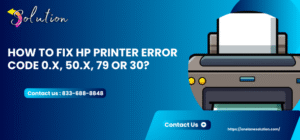
Laser technology has revolutionized various industries, and one of its most innovative applications is laser cleaning metal. This method has gained popularity for its ability to remove rust, paint, oxides, and other contaminants from metal surfaces with extreme precision. Unlike traditional cleaning methods that rely on abrasives, chemicals, or high-pressure blasting, laser cleaning offers a non-contact, highly controlled process that ensures effective surface preparation without compromising the metal’s structure.
Industries ranging from automotive and aerospace to shipbuilding and manufacturing have embraced laser cleaning metal due to its efficiency and accuracy. Whether dealing with delicate historical artifacts, industrial machinery, or large-scale production equipment, laser cleaning provides a reliable solution that minimizes waste and environmental impact.
How Does Laser Cleaning Metal Work?
The process of laser cleaning metal involves the use of high-intensity laser beams to remove unwanted materials from the metal surface. This is achieved through a phenomenon known as laser ablation, where the laser energy interacts with the contaminants, breaking them down into fine particles that either vaporize or are collected through a filtration system.
The laser is set to a specific wavelength that targets the impurities without affecting the underlying metal. This precision ensures that only rust, paint, or other unwanted coatings are removed while preserving the integrity of the metal surface.
The process can be controlled based on the type of contamination and the metal being cleaned. Operators can adjust the laser’s power, speed, and pulse duration to achieve the desired results. This level of customization makes laser cleaning metal suitable for a wide range of applications.
Applications of Laser Cleaning Metal
1. Rust and Oxide Removal
Rust is one of the biggest threats to metal structures and components. Laser cleaning effectively removes rust and oxides from metal surfaces, restoring them to their original condition. This process is widely used in industries where rust prevention and surface maintenance are critical.
2. Paint Stripping
Traditional paint removal methods involve chemicals or abrasive blasting, which can be messy and harmful. Laser cleaning metal provides a clean and efficient way to strip paint without damaging the underlying material. This application is particularly useful in the automotive, aerospace, and restoration industries.
3. Welding Pre-Treatment and Post-Treatment
For welding applications, laser cleaning metal is used to prepare surfaces before welding by removing dirt, oxides, and coatings. After welding, it can also be used to clean up weld seams, ensuring a smooth and polished finish.
4. Mold and Tool Cleaning
In manufacturing, molds and tools accumulate residues over time, affecting product quality. Laser cleaning effectively removes contaminants from molds and tools, extending their lifespan and maintaining production efficiency.
5. Graffiti and Coating Removal
Public spaces, historical monuments, and commercial properties often suffer from unwanted graffiti. Laser cleaning metal can remove graffiti and coatings without damaging the original surface, making it a preferred method for restoration projects.
6. Shipbuilding and Marine Applications
Ships and marine structures are exposed to harsh environments, leading to rust and corrosion. Laser cleaning metal is widely used in ship maintenance to clean hulls, decks, and other components efficiently.
7. Automotive and Aerospace Maintenance
The automotive and aerospace industries require precision in surface cleaning to maintain safety and performance standards. Laser cleaning is used to remove coatings, adhesives, and contaminants from engine components, aircraft parts, and other metal surfaces.
Why Industries Prefer Laser Cleaning Metal
The increasing adoption of laser cleaning metal across industries is due to its efficiency, accuracy, and environmentally friendly approach. Unlike chemical cleaning, which involves hazardous substances, laser cleaning does not require any additional chemicals, making it a safer alternative. Additionally, the precision of laser cleaning reduces material waste and eliminates the risk of damaging sensitive components.
Another factor driving its popularity is cost-effectiveness. While the initial investment in laser cleaning equipment may be higher than traditional methods, the long-term benefits outweigh the costs. Reduced maintenance, minimal waste disposal, and faster cleaning processes contribute to overall operational savings.
How Laser Cleaning Metal Stands Out from Traditional Methods
Non-Contact Process
One of the biggest differences between laser cleaning metal and traditional methods is that it is a non-contact process. This means that no physical force is applied to the metal, reducing wear and tear on delicate or thin surfaces.
Selective Cleaning
Laser cleaning allows for selective removal of contaminants without affecting the base material. This is particularly useful for applications that require high precision, such as aerospace and electronics industries.
Minimal Waste and Pollution
Unlike chemical and abrasive cleaning methods that generate waste materials, laser cleaning produces minimal residues. Most of the removed contaminants are vaporized, making it a more environmentally friendly choice.
Faster and More Efficient
Compared to traditional cleaning techniques, laser cleaning metal is significantly faster. The automation capabilities of laser systems also enhance efficiency, allowing industries to complete cleaning tasks with minimal downtime.
Choosing the Right Laser Cleaning Metal System
Selecting the right laser cleaning system depends on several factors, including the type of metal, the level of contamination, and the required precision. Different laser power levels and wavelengths are available to suit various applications. For instance, high-power lasers are used for industrial-scale cleaning, while lower-power options are suitable for delicate or detailed restoration work.
Before investing in a laser cleaning metal system, it’s essential to consider factors such as:
-
The material being cleaned – Different metals respond differently to laser energy.
-
The type of contamination – Whether it’s rust, paint, or coatings, the laser parameters must be adjusted accordingly.
-
The required cleaning speed – Some applications require quick cleaning, while others focus on precision.
Working with a reputable supplier can help industries choose the right laser cleaning solution that aligns with their specific needs.
Future of Laser Cleaning Metal
As technology continues to advance, laser cleaning metal is expected to become even more efficient and accessible. Innovations in laser technology will likely lead to more compact, cost-effective, and versatile cleaning systems that cater to a broader range of industries.
Additionally, as industries prioritize sustainability, laser cleaning’s eco-friendly approach will further solidify its position as the preferred surface cleaning method. With ongoing research and development, we can expect enhanced automation, improved laser efficiency, and new applications that make laser cleaning an indispensable tool for metal maintenance and restoration.
Final Thoughts
Laser cleaning metal has transformed the way industries maintain and restore metal surfaces. From rust removal to paint stripping, this advanced cleaning method offers precision, efficiency, and environmental benefits that set it apart from traditional techniques. As industries continue to embrace innovation, laser cleaning metal is set to play a crucial role in ensuring high-quality surface treatment with minimal waste and maximum reliability.
For businesses looking to enhance their cleaning processes while reducing costs and environmental impact, laser cleaning metal is a forward-thinking solution that delivers outstanding results. Whether in automotive, aerospace, marine, or industrial applications, this cutting-edge technology is shaping the future of metal surface restoration.


